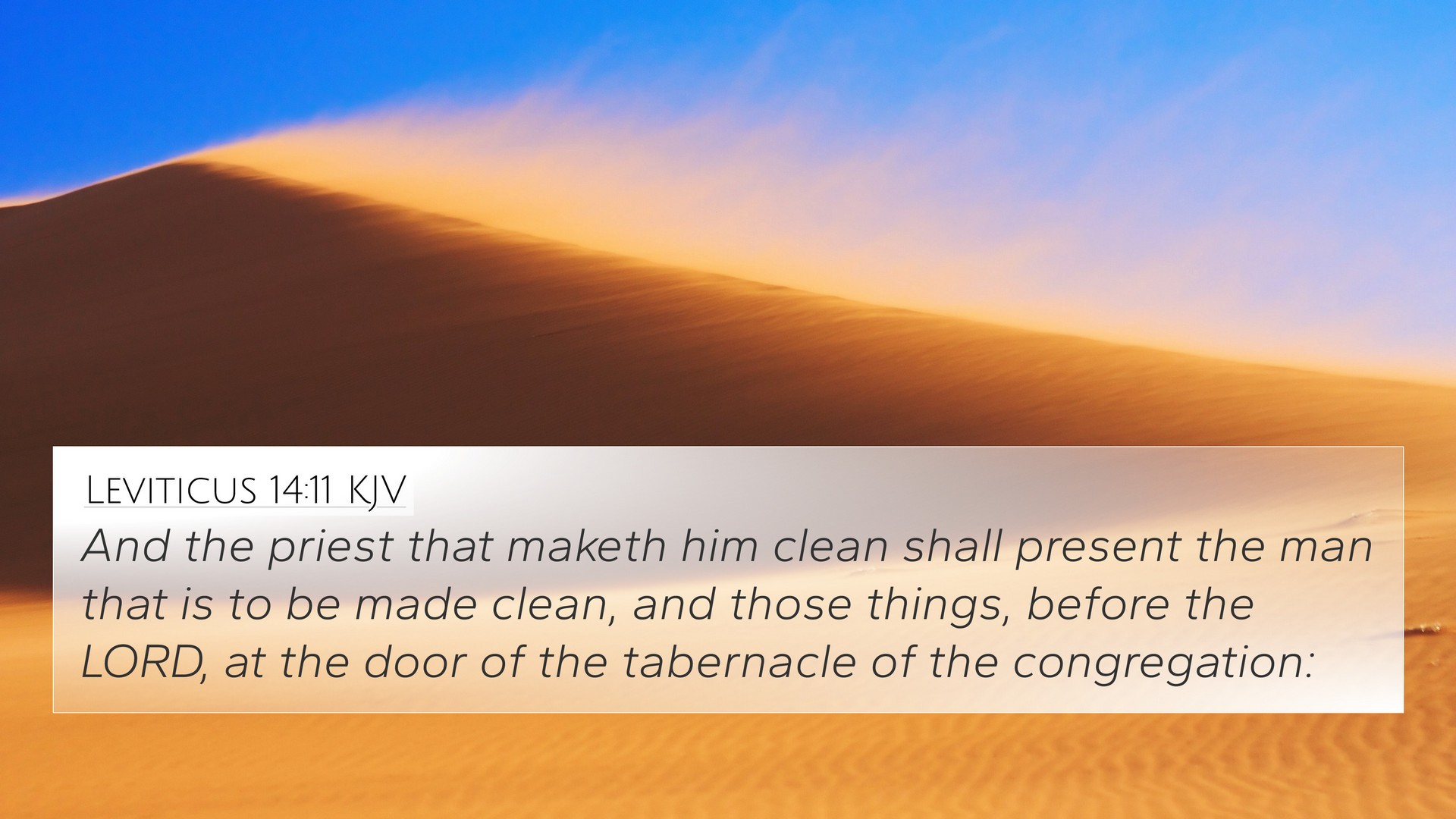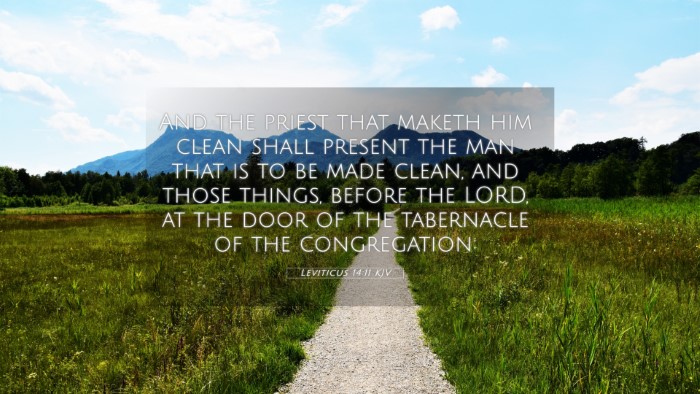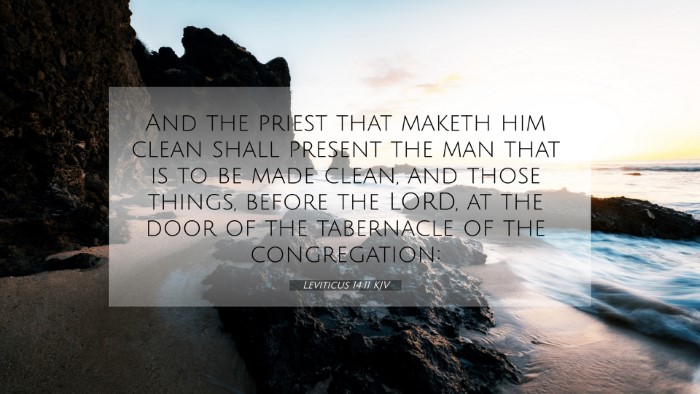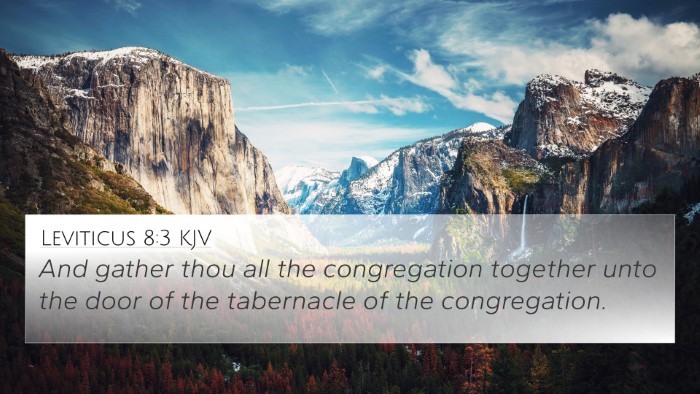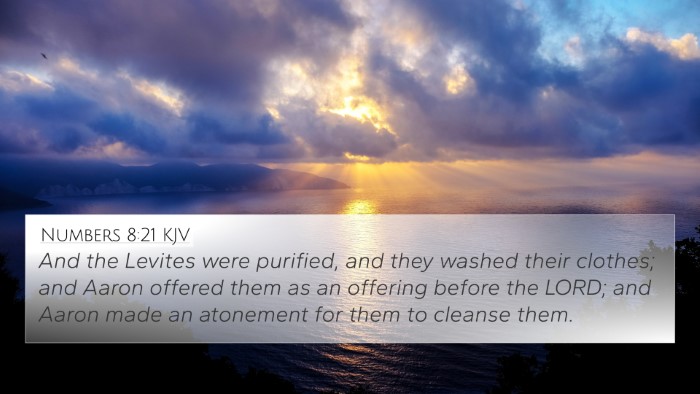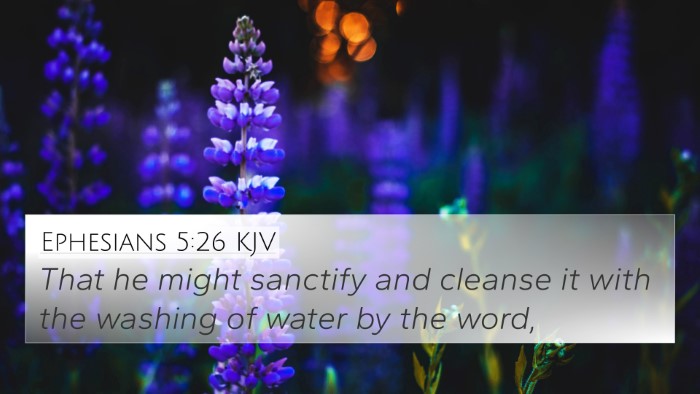Understanding Leviticus 14:11
The verse Leviticus 14:11 states:
"And the priest who makes him clean shall present the man who is to be made clean and those things before the Lord at the entrance of the tent of meeting."
Summary and Interpretation
This verse is part of the laws regarding the ceremonial cleansing of a leper, which is a significant theme in the Old Testament regarding sin, purification, and restoration within the community of Israel.
- Role of the Priest: The verse highlights the crucial role of the priest in mediating between God and the people. According to Matthew Henry's Commentary, the priest not only performs the act of cleansing but also serves as a representative of the community before God.
- Ceremonial Purity: Albert Barnes emphasizes the importance of ceremonial purity and the role of the priest in ensuring that individuals who are cleansed can reintegrate into society. The cleansing process signifies a restored relationship with God.
- Public Acknowledgment: Adam Clarke comments on the public aspect of this act, indicating that the presentation before the Lord ensures that the healing is acknowledged within the community, which further underscores the corporate nature of Israel’s worship and purity.
Theological Insights
This verse not only tells about the cultural and spiritual practices of Israel but also foreshadows New Testament themes of cleansing and redemption through Christ. The involvement of a priest in the cleansing ritual reflects the New Testament's priestly function of Jesus Christ in offering ultimate purification.
Cross-Referenced Verses
Leviticus 14:11 can be linked to several key Bible verses which enhance understanding and provide a broader context through comparative Bible verse analysis:
- Matthew 8:2-4: The healing of a leper by Jesus, illustrating the fulfillment of the Levitical law through His actions.
- Luke 5:12-14: Another account of Jesus healing a leper, emphasizing the importance of following the priest's instructions post-healing.
- Hebrews 10:19-22: Discusses the priesthood of Christ and how believers are cleansed through His sacrifice, making a profound connection to the themes of forgiveness and accessibility to God.
- 1 Peter 2:9: Highlights the believer's identity as a chosen generation, showing how the cleansing of the leper represents the spiritual cleansing that Christians experience.
- Isaiah 53:5: Prophetic reference to the suffering servant who would bear our iniquities, linking to the need for spiritual healing.
- James 5:14: Calls for the elders (similar to priests) to pray over the sick, connecting the New Covenant practices with the Old Testament roots.
- Romans 12:1: An appeal to present oneself as a living sacrifice, drawing a thematic connection to the offerings made in Leviticus, including the healing of the leper.
Thematic Connections
The cleansing ritual associated with leprosy in Leviticus 14:11 demonstrates the connection between physical and spiritual purification. This theme recurs throughout the scriptures, showing how God desires holiness from His people (1 Peter 1:16).
Furthermore, cross-referencing Biblical texts can deepen our understanding of Leviticus 14:11 by showing how the Old Testament anticipates and points towards Christ's redemptive work in the New Testament.
Tools for Bible Cross-Referencing
For those looking to study the connections between Bible verses, utilizing a Bible concordance or Bible cross-reference guide can be invaluable. Here are some ways to effectively engage in cross-referencing:
- Identify keywords within a verse to find related scriptures.
- Use thematic Bible verse connections to explore overarching biblical narratives.
- Engage in comparative studies to identify parallels between different books and authors.
- Keep a Bible reference resource handy to make the study process more efficient.
Conclusion
Understanding Leviticus 14:11 requires more than just reading it in isolation; it encompasses a richer picture within the narrative of the entire Bible. The connections made through cross-referencing demonstrate how each part of scripture holds relevance to others, showcasing the unified message of God's desire for purity and relationship with His people.
